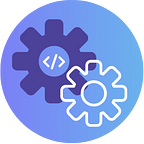Identifying the Strengths of Large Language Models
By: Medha Dhakal
Large language models (LLM) have become game-changers in the quickly developing field of artificial intelligence. The astonishing ability of these cutting-edge AI systems to comprehend and produce text that resembles human speech, based on massive amounts of data, opens up a world of possibilities for communication and problem-solving.
These models are built using complex neural network architecture known as transformers. These models comprehend the links between words and recognize the context in which they appear to process and produce text. They gain a thorough comprehension of human language through comprehensive training on a variety of sources, including books, papers, and websites.
The “Generative Pre-trained Transformer 3.5,” sometimes known as GPT-3.5, is a well-known illustration of a big language model. A massive corpus of text from the internet and other huge sources served as the training data for GPT-3.5. This training gives the model the ability to produce logical and contextually appropriate answers to a variety of inquiries, making it a flexible tool across several domains.
Large language models have numerous and significant uses. The field of chatbots and virtual assistants is one notable application. Chat interfaces that leverage these models can have more natural and conversational user interactions. They may help with a variety of chores, answer inquiries, and provide information, reinventing customer service and support.
Another area where huge language models have the potential to excel is education. Imagine a personalized AI teacher that offers explanations and advice that are specific to each student’s learning preferences. Large language models can assist in bridging educational gaps and improving accessibility and engagement with learning thanks to their extensive knowledge and language competency.
It’s crucial to recognize the limitations of huge language models despite their enormous potential. While they are excellent at producing text, they depend on patterns in the data that served as their training set. As a result, they could occasionally disseminate information that is erroneous or biased. To ensure truth and fairness, responsible use necessitates careful assessment and verification of the generated content.It is necessary to handle concerns including data privacy, algorithmic biases, and potential abuse. To ensure the ethical creation and use of these potent AI tools, human oversight and adherence to ethical standards are crucial.
These sizable language models mark a revolutionary development in artificial intelligence. Their capacity to comprehend and produce text that sounds like human speech has the potential to significantly improve content creation, education, and communication. However, it is crucial to use caution when using them, making sure that moral guidelines and human control are in place. We set out on a path toward increasingly sophisticated and significant human-machine interactions as we begin to harness the power of massive language models.
Sources:
Kharatyan, Lilit. “Large Language Models Specialized in Translation Are Multiplying.” Slator, 13 July 2023, slator.com/large-language-models-specialized-in-translation-are-multiplying/.
Priest, Mike. “What Are Large Language Models and How Do They Work?” Conversational AI Platform for Enterprise, 6 July 2023, www.boost.ai/blog/llms-large-language-models.
Tickoo, Aneesh. “A New AI Research Introduces Gpt4roi: A Vision-Language Model Based on Instruction Tuning Large Language Model (LLM) on Region-Text Pairs.” MarkTechPost, 14 July 2023, www.marktechpost.com/2023/07/13/a-new-ai-research-introduces-gpt4roi-a-vision-language-model-based-on-instruction-tuning-large-language-model-llm-on-region-text-pairs/.
